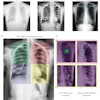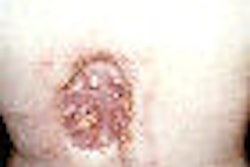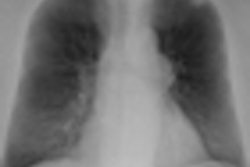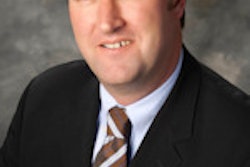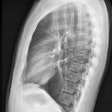Federal lawmakers expressed surprise at the lack of regulatory oversight over medical uses of radiation at hearings in the U.S. Congress. While everyone in attendance agreed that the current regulatory environment needs fixing, the thorny question is how to go about doing it.
Members of the U.S. House of Representatives subcommittee on health got an earful from members of organized medicine, patients, and other experts, and they seemed to acknowledge the complexity of the issue.
"As valuable, informative, thought-provoking, and incredibly useful as your testimony was today, we've ended up with more questions. Before we move on any legislation, we'll need to have more hearings to get answers to our questions." That's what Rep. Frank Pallone Jr. (D-NJ), chairman of the subcommittee, told invited witnesses after several hours of hearings.
Radiation errors
Congress called the hearings following the recent publication of research studies showing the rising exposure of U.S. citizens to medical radiation. The urgency of the problem has been underlined by a string of embarrassing incidents involving errors in the use of radiation for both diagnostic and therapeutic applications. Indeed, just two days before the hearings, a Missouri hospital disclosed that it had delivered too much radiation to 76 patients due to the miscalibration of a radiation therapy system.
At today's hearings, representatives heard from a mix of radiologists, radiation oncologists, medical physicists, a cancer patient, and parents of a deceased patient. Also testifying were officials from the Department of Veterans Affairs, a radiation therapist, an industry executive, and representatives of five professional associations.
After a three-hour hearing that ran out of time, members of Congress and invited witnesses were in agreement that diagnostic imaging and radiation therapy have made extraordinary achievements in diagnosing illness and treating cancer. They also agreed that with the utilization of increasingly complex technology, oversight, accreditation and licensing requirements, and quality assurance requirements as they exist in a fragmented state today are obsolete and need to be changed. The question is how to do this intelligently.
Pallone opened the hearings by noting that "medical radiation has undoubtedly saved lives and has reshaped the world of diagnostics," but that the subcommittee "wanted to know more about the field and to examine what the driving factors are when things go wrong."
"It is shocking to me that in many states, individuals who operate these devices do not need to be licensed, and are therefore not regulated at all in terms of education and expertise," Pallone said. "Even in states where there are licensing requirements, the requirements to report errors and the penalties for making errors are basically nonexistent or not enforced. As a result, we have no idea how often these errors occur and have no good data on where the weaknesses in the system truly are."
Rep. Henry Waxman (D-CA), chairman of the subcommittee's parent, the House Committee on Energy and Commerce, as well as Pallone and other House subcommittee members in attendance, expressed their astonishment and concern that no federal agency has authority over medical radiation issues. They were also surprised at the lack of formal regulations with respect to many facets of the use of both diagnostic imaging and therapeutic radiation equipment.
Recurrent themes were the acknowledgement that when properly used, medical radiation was safe and of invaluable importance to 21st century medicine, that something needed to be done to reduce medical radiation errors, and that whatever was done should not cause panic in patients, something that is now beginning to be seen.
The first two witnesses presented testimony of radiation therapy treatments that killed a patient due to repetitive massive overdoses. On the other side of the coin, lawmakers heard about a patient with metastatic cancer who has been kept alive for 11 years thanks to radiation therapy.
James and Donna Parks, the parent of Scott Parks, whose agonizing experiences of dying from a radiation overdose were profiled in an article and photo album published January 25, 2010, by the New York Times, called for the development of a national registry and database for the mandatory reporting of medical errors. They suggested that this would be a repository to identify medical problems throughout the U.S. and to evaluate trends, but they emphasized that for it to work, it must have the ability to enforce compliance through fines and imprisonment.
The Parks family also asked medical device manufacturers to develop failsafe interactive expert systems that could interact with human operators, preventing medical errors from occurring. The Parks, both of whom had hospital-based careers before retiring, pleaded that "oncologists and supervising physicists must learn to micromanage every aspect of the radiology department. It is outrageous that any untrained and unskilled personnel can get anywhere near such dangerous equipment."
They also expressed their outrage that their daughter-in-law, Carmen Parks, was restricted from testifying by a gag order agreement that was a component of her financial compensation as settlement. They said that Scott stayed alive until this settlement was reached, in spite of the fact that he went blind and deaf and required a permanent feeding tube because his jaw calcified.
Suzanne Linley, a stage IV colon cancer survivor, tempered the Parks' testimony with accolades to new radiotherapy technology that has kept her alive for 11 years, minimizing one metastasis after another. She was 31 years old when diagnosed with cancer in 1998.
"What these technologies are able to do, and what they have done for me, is nothing short of miraculous. They have turned miniscule moments into magical milestones," she said, requesting the subcommittee not to create mental barriers of fear and apprehension that could restrict access to treatment that has benefited her and similar patients.
Professional testimony
Kicking off the testimony from healthcare professionals was Dr. Rebecca Smith-Bindman, a professor of radiology at the University of California, San Francisco (UCSF). She was the author of a study published in December 2009 that provoked concern when it revealed the variability of radiation dose for the most commonly ordered CT exams.
Emphasizing the potential cancer risk from radiology exams that deliver high levels of radiation, she described the oversight challenges relating to CT exams. Smith-Bindman specifically pointed out that because few national guidelines exist on how CT exams should be conducted, there is great potential for practice variation that could introduce unnecessary harm.
The differences in the ways that CT scanners of different manufacturers report radiation dose makes it difficult for radiologists to standardize their practice, she said. As a result, data collection relating to CT dose is limited and very difficult to obtain.
To make CT scanning as safe as possible, it is necessary to lower the radiation dose of routine CT scans, and order these exams only when necessary, Bindman-Smith said. She added that the inclusion of radiation dose exposure levels into electronic medical records would be a very positive step, and applauded the efforts of manufacturers to make CT exams safer for patients.
Another witness, Eric Klein, Ph.D., professor of radiation oncology at Washington University in St. Louis, lambasted the trend of hospitals and private cancer treatment centers to purchase advanced radiation therapy equipment without being adequately prepared to use it.
"The delivery technique of intensity-modulated radiotherapy [IMRT], which provides superior treatment delivery customization, comes with an increase in irradiation time by a factor of two to 10 compared with conventional radiation therapy," he said. "Thousands of hospitals and private treatment facilities all over the country have purchased IMRT machinery, often for competitive purposes, and far too often without properly trained staff in place."
Klein told the subcommittee that with up to 100 steps for each radiation therapy treatment, all staff must be thoroughly trained and given the time needed to perform all safety and quality assurance procedures. This would include "time outs" before each treatment began, to enable radiation therapists to cross check all parameters, as well as allowing medical physicists enough time to perform stringent quality control.
Klein said he was skeptical about the frequently referenced low radiation therapy error rate of less than one in 10,000 treatments. He pointed out that because there is no statewide mandate to report many errors, there is no way of knowing what the real error rate might be, and suggested, in fact, that it might be too high. His point: Nobody really knows, and he told Congress how the use of centralized sources to report both adverse events officially, as well as adverse events and near misses unofficially, could benefit patients and medical professionals alike.
Klein made a point of stating that the training of medical physicists should include an accredited residency program, and that this will be a requirement for certification by the American Board of Radiology in 2014. He noted that the delay in implementation is due to a lack of accredited residency programs, and hinted that federal funds might stimulate this.
Cynthia McCollough, Ph.D., from the Mayo Clinic in Rochester, MN, gave the subcommittee a crash course on comparative radiation doses between diagnostic imaging and radiation therapy studies. She described the innovations that CT manufacturers have developed to reduce radiation dose exposure while producing images of high diagnostic quality.
McCollough concurred with other witnesses that training at all professional levels -- from technologist, to radiologist, to medical physicist -- has not kept pace with the demands of operating new equipment using sophisticated technology.
"The single most important contribution we can make to patient safety is to ensure that all personnel involved in the operation of CT systems meet nationally prescribed, minimum levels of training and competency," McCollough said. "The needed accreditation and certification programs exist, but without mandatory requirements for a consistent level of advanced education, we are allowing, in some cases, minimally trained personnel to operate extremely advanced medical equipment."
Next week: testimony at the hearings from representatives of professional healthcare associations.
By Cynthia E. Keen
AuntMinnie.com staff writer
February 26, 2010
Related Reading
Missouri hospital admits to radiation overdose, February 25, 2010
MITA unveils radiation dose warning system for CT, February 25, 2010
Second NY Times article highlights radiation therapy errors, January 29, 2010
NY Times article details radiation therapy errors, January 26, 2010
FDA finds new cases of CT radiation overexposure, December 7, 2009
Copyright © 2010 AuntMinnie.com


